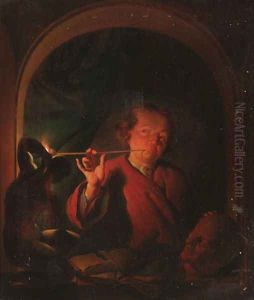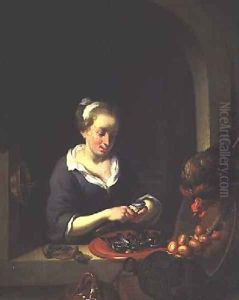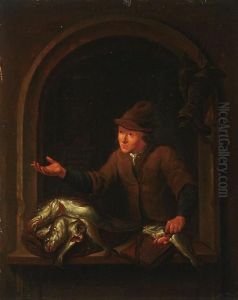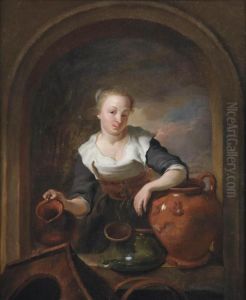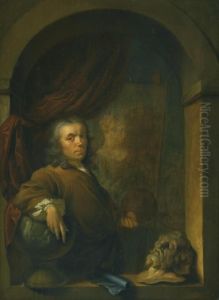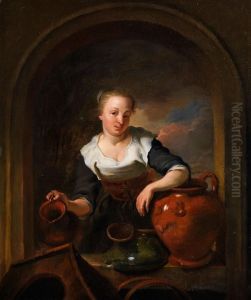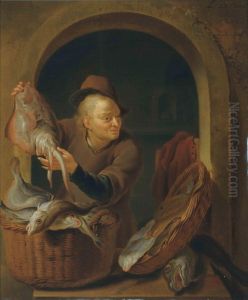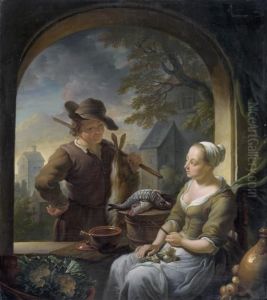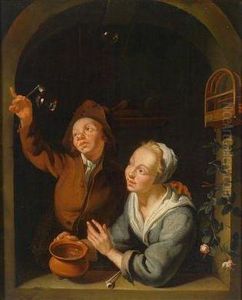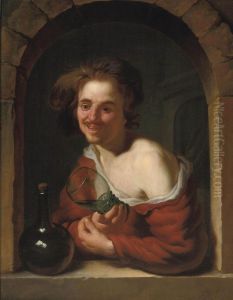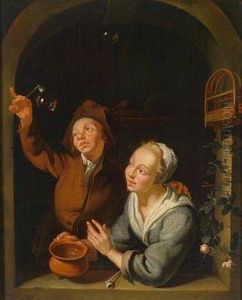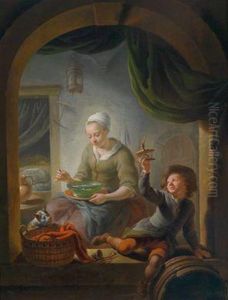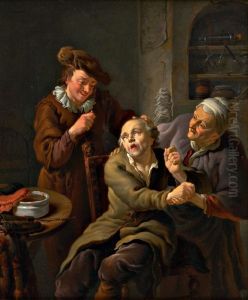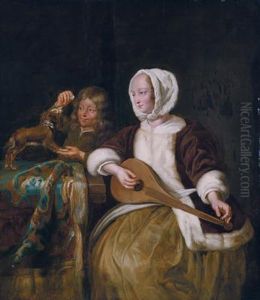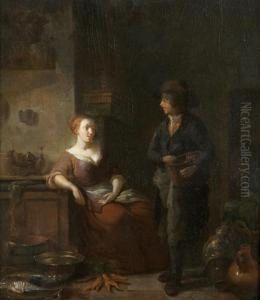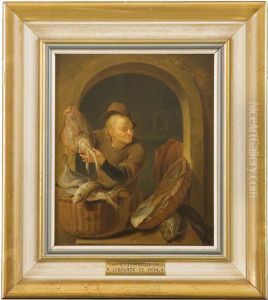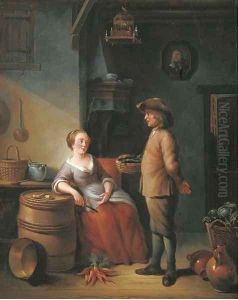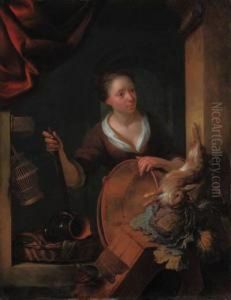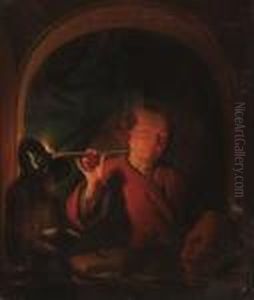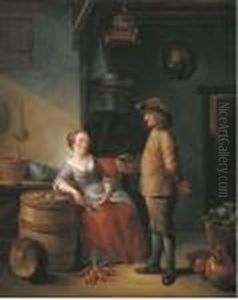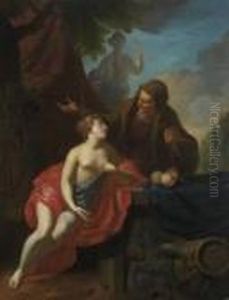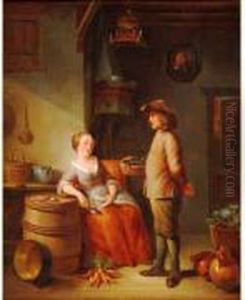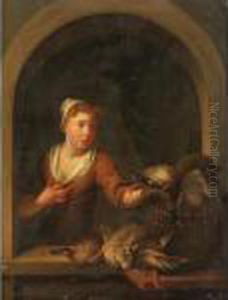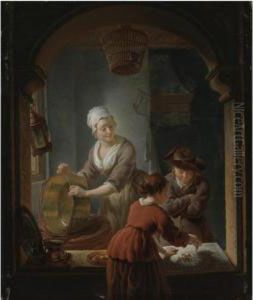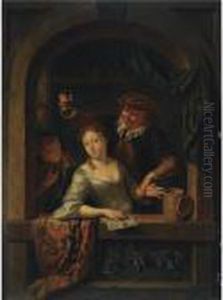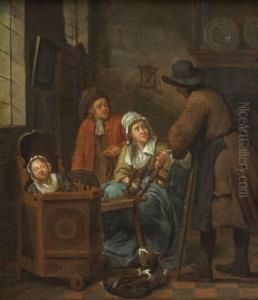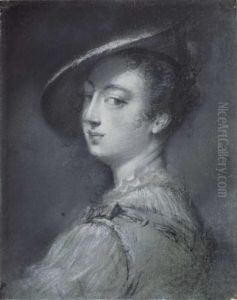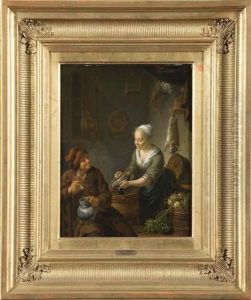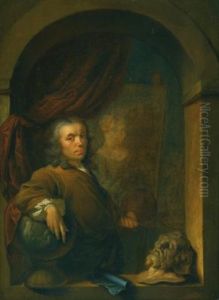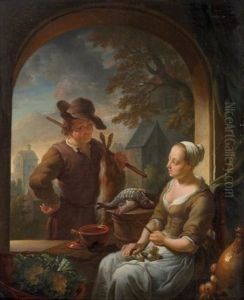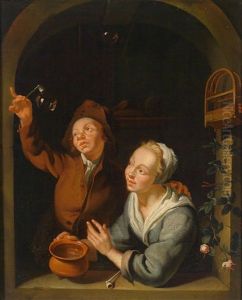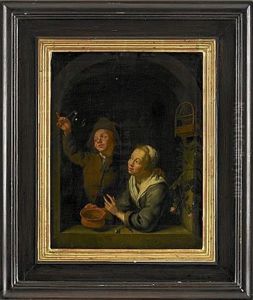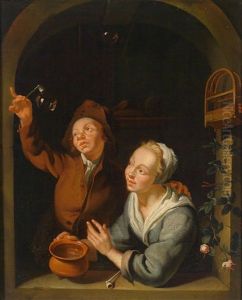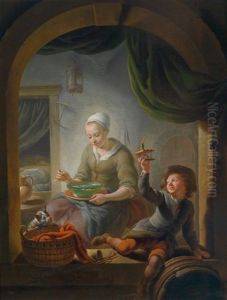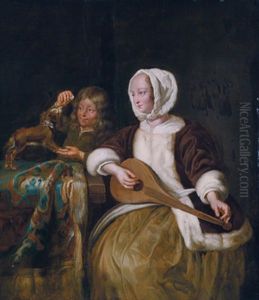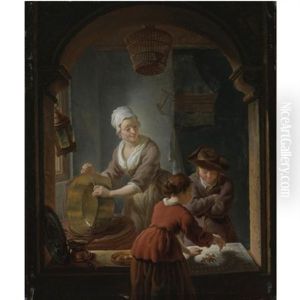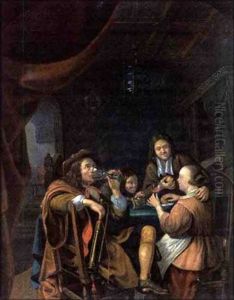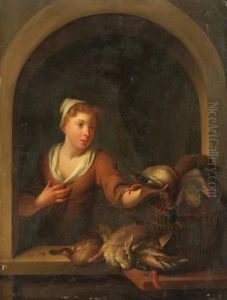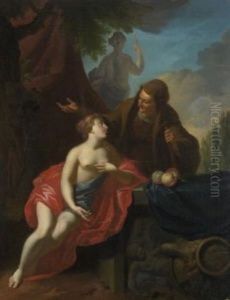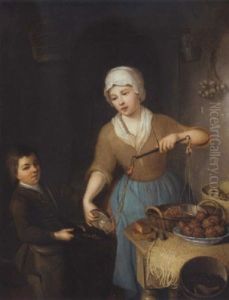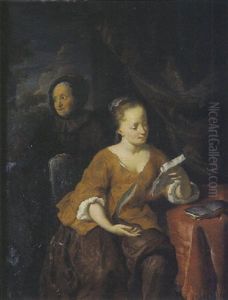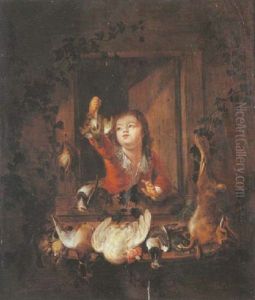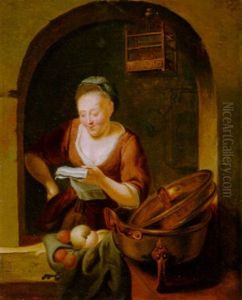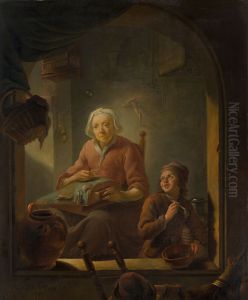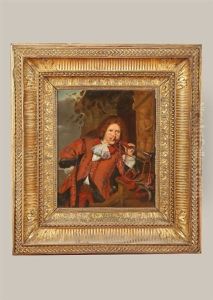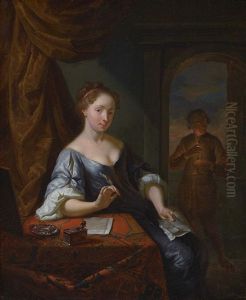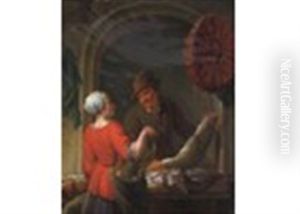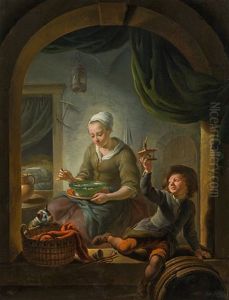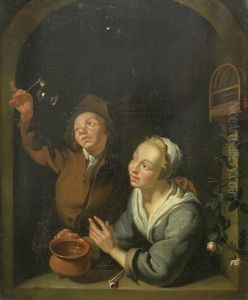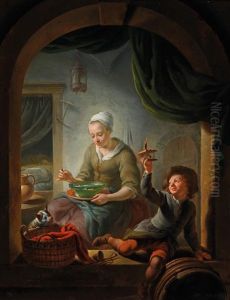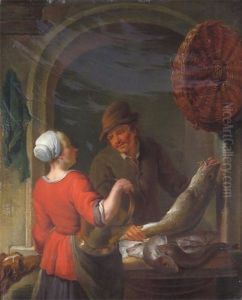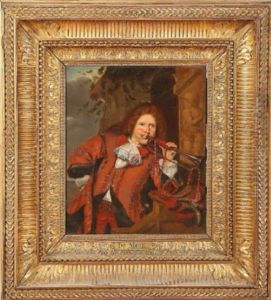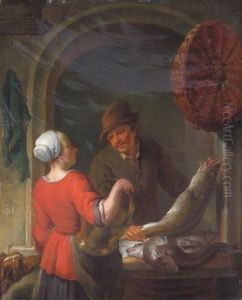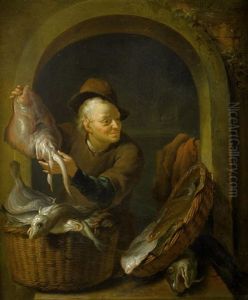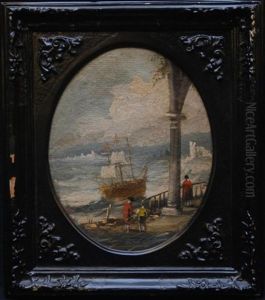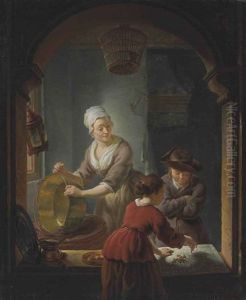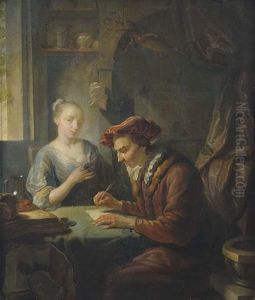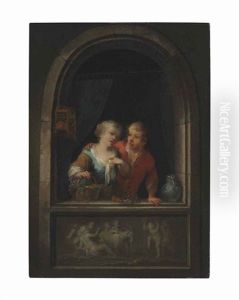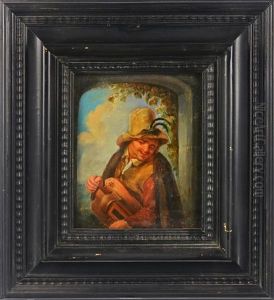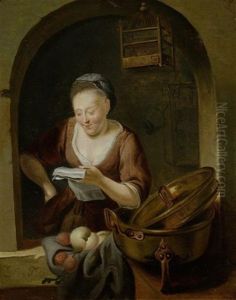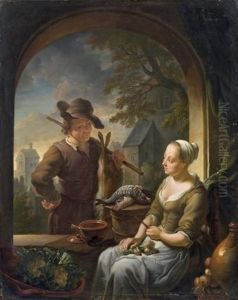Louis de Moni Paintings
Louis de Moni was a Dutch Golden Age genre painter whose work is often characterized by its fine detail, careful composition, and the depiction of everyday life. Born in Middelburg in 1698, de Moni was part of a family of artists, with his father Pieter de Moni also being a painter. Although not as widely recognized as some of his contemporaries, de Moni made a significant contribution to the genre of domestic interior scenes, which were highly popular during the Dutch Golden Age.
De Moni's early life and training are not well documented, but it is believed that he was taught by his father and possibly by other local artists in Middelburg. He became a member of the Middelburg Guild of Saint Luke, which was a common practice for artists of the time to gain recognition and the ability to sell their work. De Moni later moved to Leiden, where he further developed his style and produced many of his known works.
His paintings typically depict middle-class interiors with figures engaged in everyday activities, such as reading, writing, or domestic tasks. The scenes are rendered with a high degree of realism, and de Moni's attention to detail is evident in the textures of fabrics, the play of light and shadow, and the nuanced expressions of his figures.
Despite his talent, Louis de Moni did not achieve the same level of fame as some of his contemporaries, such as Johannes Vermeer or Pieter de Hooch. Nevertheless, his work is appreciated for its contribution to the genre and offers a glimpse into the daily life of the Dutch middle class in the 18th century.
De Moni's later life is not well recorded, and it is unclear how his career progressed in his later years. He passed away in 1771, leaving behind a modest but important body of work that continues to be studied for its artistic and historical value. His paintings can be found in various museums and private collections, offering a window into the world of the Dutch Golden Age.
